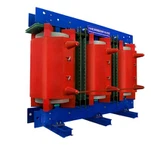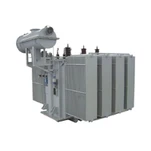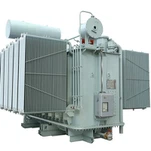Transformers are essential components in electrical power systems, enabling the transfer of electrical energy between circuits at varying voltage levels. The way a transformer is connected directly affects its performance, functionality, and suitability for specific applications. Below is a detailed explanation of the common transformer connection methods.
1. Basic Transformer Connection Types
Transformers can be classified based on their winding connections. The two primary windings are:
• Primary Winding: Connected to the input power source.
• Secondary Winding: Connected to the load.
The windings can be configured in different ways, primarily as Star (Y) or Delta (Δ) connections. These configurations can be applied to either the primary or secondary side, or both.
2. Common Transformer Connection Configurations
1. Delta-Delta (Δ-Δ) Connection
• Features:
• Both primary and secondary windings are connected in a delta configuration.
• Suitable for high power and three-phase loads.
• Advantages:
• No need for a neutral point.
• Balanced load distribution.
• High reliability as it can operate with one failed phase (open-delta operation).
• Applications: Industrial plants and systems requiring robust three-phase power.
2. Star-Star (Y-Y) Connection
• Features:
• Both primary and secondary windings are connected in a star configuration.
• Requires a neutral for stable operation.
• Advantages:
• Easy to achieve multiple voltage levels with a neutral wire.
• Economical for high-voltage transmission.
• Applications: High-voltage transmission lines.
3. Delta-Star (Δ-Y) Connection
• Features:
• Primary winding is connected in delta, and secondary winding is connected in star.
• Neutral is accessible on the secondary side.
• Advantages:
• Facilitates step-up or step-down voltage transformation.
• Balances unbalanced loads.
• Applications: Distribution transformers in power systems.
4. Star-Delta (Y-Δ) Connection
• Features:
• Primary winding is connected in star, and secondary winding is connected in delta.
• Advantages:
• Eliminates the need for a neutral on the primary side.
• Suitable for low-voltage, high-current applications.
• Applications: Motor drives and industrial machinery.
3. Special Transformer Connections
1. Zig-Zag Connection
• Features:
• A hybrid configuration using parts of star and delta.
• Provides grounding and reduces harmonic distortion.
• Advantages:
• Better fault tolerance and load balancing.
• Suppresses third-harmonic currents.
• Applications: Grounding transformers and special industrial applications.
2. Open-Delta Connection
• Features:
• Operates with only two windings in a delta configuration.
• Advantages:
• Can continue operating even if one transformer fails.
• Cost-effective for small loads.
• Applications: Temporary systems and backup power.
4. Key Considerations in Transformer Connections
1. Voltage Matching: Ensure the primary and secondary voltage ratings align with system requirements.
2. Phase Shift: Certain configurations, such as Δ-Y, introduce a phase shift between primary and secondary windings.
3. Load Characteristics: Choose a configuration that suits the load type (balanced or unbalanced).
4. Neutral Requirements: Star connections provide a neutral point, while delta does not.
5. Practical Examples
• Power Transmission: High-voltage transformers often use Y-Y or Y-Δ configurations for efficient transmission.
• Industrial Applications: Δ-Δ transformers are common in factories to handle heavy machinery.
• Urban Distribution: Δ-Y transformers are widely used to step down voltage for residential and commercial areas.
Conclusion
Understanding transformer connections is critical for designing, operating, and maintaining electrical power systems. Each connection type offers unique advantages and is suited to specific applications. By choosing the right configuration, engineers can optimize system performance, ensure reliability, and meet the demands of various electrical loads.











